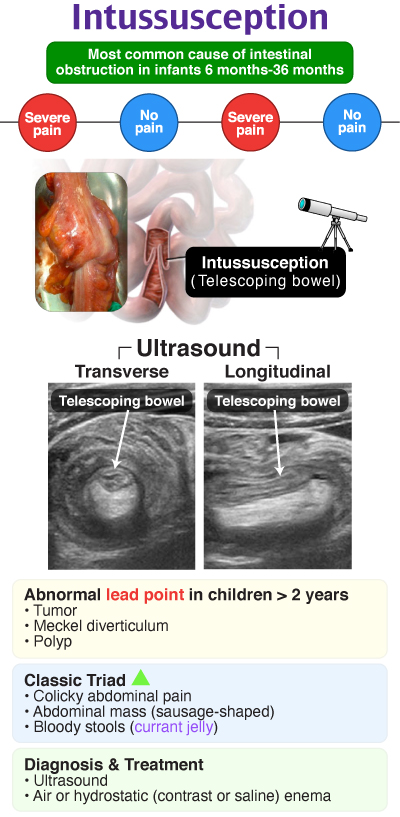Tame the whirlwind of PA-1 year with 1,800 didactic-level questions created to help you excel in Subject Exams and the End of Didactic Year Exam.
Tame the whirlwind of PA-1 year. Authored & peer-reviewed by PA-Cs who excelled in PA school and on the PANCE. Each question is written to help you build a strong foundation of knowledge, digest the information you’re learning, and ace your subject exams.
Each question is written to resemble the format and topics on the exam, meaning you won’t see any negatively phrased questions, no “all of the following except,” no “A and B”…you know what we mean. Most importantly, all questions include selective distractors (incorrect answer choices), which will help you think critically.
Intussusception is the most common abdominal emergency seen in young children. It occurs when a part of the intestine invaginates or telescopes into itself, causing a bowel obstruction. Intussusception generally occurs between 6 and 36 months of age, with boys affected more frequently than girls. Most cases have an idiopathic etiology. Patients generally present with complaints of vomiting, intermittent or… Read More
Understanding why an answer choice is incorrect is just as important as knowing why one is correct. That’s why every Rosh Review question includes detailed explanations for the correct and incorrect answer choices. These comprehensive summaries link the most important components of a topic—from risk factors to diagnostics and treatment—giving you the context to build relationships between them.
Custom illustrations and tables help further clarify the core concepts. When information is presented visually, you can focus on meaning, easily reorganize and group similar ideas, and make better use of your memory.

Your personal analytics allow you to see your progress at all times, so you can create an efficient and effective learning strategy and stay on pace with your plan.
After each explanation is a straightforward question with a simple, memorizable answer that reinforces the corresponding topic.
What is the name of the physical exam finding in intussusception that includes an empty right lower quadrant and a palpable sausage-shaped mass in the right upper quadrant?
Intussusception (Telescoping Bowel)
These bulleted reviews focus on condensed, high-yield concepts about the main topic, from patient presentation to preferred management.
“I just received comfortably above passing score on the Initial Certification Exam! When I started using Rosh Review last year for the In-Service, my scores started rising considerably. Thanks again!”

Matthew DeAugustinis, MD
Attending Physician